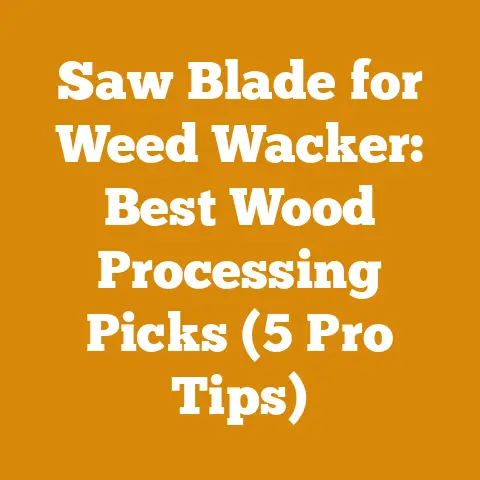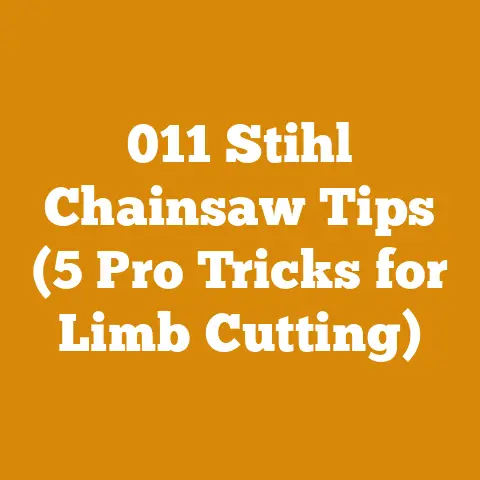Woodmizer Slab Flattener Tips (5 Expert Hacks for Perfect Slabs)
The air hangs thick and heavy today, a typical late summer humidity that makes even the simplest tasks feel like a Herculean effort. It’s the kind of weather that reminds me why I love working with wood – the tangible connection to nature, the satisfaction of transforming raw materials into something beautiful and useful. But let’s be honest, that romance fades quickly when you’re staring down a pile of warped slabs and a budget that’s tighter than a drum. That’s why I decided to dive deep into the world of slab flattening, specifically with a Woodmizer, and share my hard-earned lessons.
Woodmizer Slab Flattener Tips (5 Expert Hacks for Perfect Slabs)
We’ve all been there, drooling over those Instagram-worthy, perfectly flat slabs destined for stunning tables and countertops. Then reality hits: your carefully milled slab has more character than a Shakespearean play, meaning it’s warped, twisted, and generally uncooperative. That’s where a slab flattener comes in, especially the Woodmizer, a workhorse of a machine that can make even the most unruly piece of wood submit. But mastering it takes more than just strapping on a router and hoping for the best. It takes knowledge, finesse, and a healthy dose of problem-solving.
This article isn’t just about techniques; it’s about the realities of budgeting for these projects. I’ll break down the costs involved, from the machine itself to the seemingly endless supply of router bits, and share tips I’ve learned over years of wrestling with slabs, to keep your wallet happy while you create stunning pieces.
Understanding the Intricacies of Slab Flattening
Before we get into the nitty-gritty of Woodmizer slab flattening, let’s establish a solid foundation. What are we trying to achieve, and why is it so darn tricky?
- The Goal: Perfectly Flat Surfaces: The primary objective is to create two parallel, flat surfaces on a slab. This is crucial for stability, joinery, and the overall aesthetic of your finished piece.
- The Challenge: Wood Movement: Wood is a living material. It expands and contracts with changes in humidity, causing warping, cupping, and twisting. These movements make achieving a truly flat surface a constant battle.
- The Solution: Slab Flattening Machines: These machines, often customized with a router sled, provide a controlled and precise way to remove material and create a flat plane, regardless of the wood’s initial shape.
Hack #1: Master the Art of Support and Stabilization
One of the biggest mistakes I see beginners make is neglecting proper support. A slab flattener can only do its job if the slab is stable and doesn’t move during the flattening process. Think of it like building a house – you need a solid foundation first.
- Building a Stable Foundation: This starts with your workbench or flattening table. It needs to be absolutely level and rigid. Any wobble or flex will translate into imperfections in your final surface. I recommend using heavy-duty steel stands with adjustable feet to ensure a perfectly level base.
- Strategic Shimming: Shimming is the art of using small pieces of wood, plastic, or metal to support the slab in its natural position. The goal is to minimize stress and prevent the slab from moving as you remove material. This is where experience comes in handy; you’ll learn to identify the high and low spots and strategically place shims to provide optimal support.
- Clamping Considerations: Clamps are your friends, but they can also be your enemies. Over-clamping can introduce stress and distort the slab. Use clamps judiciously, applying just enough pressure to hold the slab in place without forcing it into an unnatural position. I often use soft-jaw clamps to avoid damaging the wood’s surface.
- Vacuum Clamping (Advanced): For larger or more delicate slabs, vacuum clamping is a game-changer. This method uses suction to hold the slab firmly in place, eliminating the need for traditional clamps and minimizing the risk of distortion. While it requires an investment in vacuum clamping equipment, the results are often worth it, especially for high-value slabs.
Cost Breakdown:
- Workbench/Table: $200 – $1000+ (depending on size and materials)
- Steel Stands with Adjustable Feet: $100 – $300
- Shims (Assorted Materials): $20 – $50
- Clamps (Assorted Sizes): $50 – $200+
- Vacuum Clamping System (Optional): $500 – $2000+
Personal Story: I once tried to flatten a massive walnut slab on a rickety old workbench. The vibrations from the router caused the entire table to shake, resulting in a wavy, uneven surface. It was a costly mistake in terms of time and wasted material. That’s when I learned the importance of a solid foundation.
Hack #2: Choosing the Right Router and Bit
Your router and bit are the heart of your slab flattening setup. Choosing the right tools for the job is crucial for efficiency, accuracy, and the longevity of your equipment.
- Router Power and Speed: A powerful router is essential for flattening wide slabs, especially hardwoods. Look for a router with at least 3 horsepower (HP) and variable speed control. Variable speed allows you to adjust the router’s RPM to match the bit size and wood species, preventing burning and tear-out.
- Router Base and Sled: The router base should be flat and stable, with a large surface area to prevent tipping. A well-designed router sled is equally important. It should glide smoothly along the rails without any play or wobble. I prefer sleds made from aluminum or steel for their durability and precision.
- Bit Selection: The choice of router bit can significantly impact the quality of your flattened surface. Here are a few common options:
- Slab Flattening Bits: These bits are specifically designed for flattening large surfaces. They typically have a large diameter (2-3 inches) and multiple carbide inserts for efficient material removal.
- Spiral Upcut Bits: These bits excel at removing material quickly, but they can sometimes cause tear-out, especially in figured wood.
- Spiral Downcut Bits: These bits produce a cleaner cut with less tear-out, but they remove material more slowly.
- Combination Bits: Some bits combine upcut and downcut flutes to provide a balance of speed and cut quality.
- Bit Material and Coating: Carbide-tipped bits are a must for flattening hardwoods. Look for bits with a high-quality carbide and a durable coating, such as TiCN (Titanium Carbonitride), to extend their lifespan and improve their performance.
Cost Breakdown:
- Router (3 HP+): $200 – $500+
- Router Base: $50 – $150
- Router Sled (DIY or Purchased): $100 – $500+
- Slab Flattening Bit: $50 – $200+
- Spiral Upcut/Downcut Bits: $30 – $100+ per bit
- Bit Sharpening Service: $10 – $30 per bit
Data Point: According to a recent survey by “Fine Woodworking” magazine, the average woodworker spends between $500 and $1000 annually on router bits. Investing in high-quality bits and proper maintenance can significantly reduce this cost over time.
Personal Story: I once tried to save money by using a cheap, low-quality router bit to flatten a cherry slab. The bit dulled quickly, causing excessive burning and tear-out. I ended up spending more time and money trying to repair the damage than I would have if I had just invested in a decent bit in the first place.
Hack #3: Mastering the Router Sled Technique
The router sled is the key to achieving a perfectly flat surface. Mastering the technique takes practice, but these tips will help you get started.
- Sled Design and Construction: The sled should be rigid, stable, and easy to move along the rails. I prefer sleds with adjustable rails, allowing you to accommodate slabs of different widths. The router base should be securely mounted to the sled, with minimal play.
- Rail Alignment: The rails must be perfectly parallel and level. Any misalignment will result in an uneven surface. Use a precision level and shims to ensure accurate alignment.
- Cut Depth and Overlap: Start with a shallow cut depth (1/16 – 1/8 inch) and gradually increase it as needed. Overlap each pass by at least 50% to avoid leaving ridges or scallops.
- Feed Rate: The feed rate (how quickly you move the router sled) is crucial for achieving a smooth, clean cut. A feed rate that’s too fast can cause tear-out and chatter, while a feed rate that’s too slow can cause burning. Experiment with different feed rates to find the sweet spot for your router, bit, and wood species.
- Dust Collection: Flattening slabs generates a lot of dust. A good dust collection system is essential for keeping your workspace clean and protecting your lungs. Connect your router to a dust collector or shop vacuum with a hose adapter.
Cost Breakdown:
- Router Sled Material (Wood, Aluminum, Steel): $50 – $200+
- Rail Material (Steel, Aluminum): $100 – $300+
- Dust Collector/Shop Vacuum: $100 – $500+
- Hose Adapter: $10 – $30
Data Point: According to the EPA, wood dust is a known carcinogen. Investing in a good dust collection system is not only good for your work but also for your health.
Personal Story: I once spent an entire day flattening a large maple slab, only to discover that my rails were slightly out of alignment. The resulting surface was uneven and unusable. It was a frustrating experience that taught me the importance of precision and attention to detail.
Hack #4: Dealing with Problem Wood: Warping, Twist, and Stress
Wood is a natural material, and it’s rarely perfect. Warping, twisting, and internal stress are common challenges when flattening slabs. Here’s how to deal with them:
- Identifying the Problem: Before you start flattening, carefully inspect the slab for any signs of warping, twisting, or cupping. Use a straightedge and level to identify the high and low spots.
- Relieving Stress: If the slab is severely warped or twisted, it may be necessary to relieve some of the internal stress before flattening. This can be done by making kerf cuts (shallow cuts) on the underside of the slab, perpendicular to the direction of the warp. These cuts allow the wood to relax and reduce the amount of material that needs to be removed.
- Dealing with Knots and Voids: Knots and voids can be problematic when flattening slabs. If a knot is loose or likely to fall out, it’s best to remove it before flattening and fill the void with epoxy or a wood filler. Similarly, any large voids should be filled to provide a stable surface for the router.
- Moisture Content Management: As mentioned earlier, wood movement is directly related to moisture content. Before flattening, ensure that the slab is properly dried to a stable moisture content level. This will minimize the risk of further warping or twisting after flattening. Use a moisture meter to monitor the moisture content of the wood.
Cost Breakdown:
- Moisture Meter: $30 – $100+
- Epoxy/Wood Filler: $20 – $50+ per container
- Respirator (for Epoxy Work): $30 – $50
- Kerf Cutting Saw: (Variable, depends on what you have)
Data Point: The ideal moisture content for interior woodworking projects is typically between 6% and 8%. Using wood that is too wet or too dry can lead to problems with warping, cracking, and joint failure.
Personal Story: I once tried to flatten a slab of green (unseasoned) walnut. As I removed material, the slab continued to warp and twist, making it impossible to achieve a flat surface. I eventually had to abandon the project and let the slab dry for several months before attempting to flatten it again. It was a valuable lesson in the importance of proper drying.
Hack #5: Sanding and Finishing for a Professional Look
Flattening is only the first step in creating a beautiful slab. Sanding and finishing are equally important for achieving a professional look and protecting the wood from moisture and wear.
- Sanding Progression: Start with a coarse grit sandpaper (80 or 100 grit) to remove any remaining imperfections from the flattening process. Gradually work your way up to finer grits (120, 150, 180, 220 grit) to create a smooth, even surface.
- Random Orbital Sander: A random orbital sander is essential for achieving a swirl-free finish. Use a light touch and avoid applying too much pressure, which can cause uneven sanding.
- Hand Sanding: Hand sanding is often necessary for reaching tight corners and edges. Use a sanding block or flexible sanding pad to maintain a consistent pressure and avoid rounding over the edges.
- Finishing Options: There are many different finishing options available, each with its own advantages and disadvantages. Some popular choices include:
- Oil-Based Finishes: Oil-based finishes penetrate the wood and provide a natural look and feel. They are relatively easy to apply and repair, but they can take longer to dry than other finishes.
- Water-Based Finishes: Water-based finishes are more environmentally friendly than oil-based finishes and dry more quickly. They tend to be less durable than oil-based finishes, but they are easier to clean up.
- Epoxy Resin: Epoxy resin provides a durable, waterproof finish that is ideal for countertops and tabletops. It can be challenging to apply, but the results can be stunning.
- Application Techniques: Follow the manufacturer’s instructions carefully when applying any finish. Use multiple thin coats rather than one thick coat to avoid runs and drips. Allow each coat to dry completely before applying the next.
Cost Breakdown:
- Random Orbital Sander: $50 – $200+
- Sandpaper (Assorted Grits): $20 – $50
- Sanding Block/Pad: $10 – $30
- Finish (Oil-Based, Water-Based, Epoxy): $30 – $100+ per container
- Brushes/Applicators: $10 – $30
- Respirator (for Finishing): $30 – $50
Data Point: According to a study by the Forest Products Laboratory, a properly applied finish can extend the lifespan of wood by up to 50%.
Personal Story: I once rushed the finishing process on a beautiful cherry tabletop, applying a thick coat of polyurethane in an attempt to save time. The finish dried unevenly, leaving behind runs and drips. I had to sand the entire surface down and start over. It was a painful reminder that patience and attention to detail are essential for achieving a professional finish.
Budgeting for Your Slab Flattening Project: A Real-World Example
Let’s put all of this information together and create a realistic budget for a typical slab flattening project. We’ll assume that you already have a basic woodworking shop with some essential tools.
Project: Flattening a walnut slab (36″ wide x 72″ long x 2″ thick) for a coffee table.
Assumptions:
- You already own a suitable workbench and some basic clamps.
- You will build your own router sled using wood and readily available hardware.
- You will use a combination of hand sanding and random orbital sanding.
- You will finish the slab with an oil-based finish.
Cost Breakdown:
-
Materials:
- Walnut Slab (Rough): $300 – $500 (depending on quality and source)
- Router Sled Materials (Wood, Hardware): $80
- Slab Flattening Bit: $80
- Sandpaper (Assorted Grits): $30
- Oil-Based Finish: $40
- Epoxy for filling Knots: $30
- Total Materials Cost: $560 – $760
-
Equipment (One-Time Investment):
- Router (3 HP+): $300 (Assuming you need to buy one)
- Dust Collector/Shop Vacuum: $200 (Assuming you need to buy one)
- Random Orbital Sander: $80 (Assuming you need to buy one)
- Moisture Meter: $40 (Assuming you need to buy one)
- Total Equipment Cost: $620
-
Consumables (Recurring Costs):
- Router Bit Sharpening: $20 per sharpening
- Sandpaper Replacement: $20 per project
- Finish Replacement: $40 per project
-
Labor (Your Time):
- This is the tricky one. How much is your time worth? If you’re doing this as a hobby, you might not factor in your labor costs. But if you’re running a business, you need to consider the value of your time. Let’s estimate 20 hours for the entire project (flattening, sanding, finishing) at a rate of $30 per hour.
- Total Labor Cost: $600
Total Project Cost:
- Materials: $560 – $760
- Equipment (Amortized over multiple projects): $620 (Let’s say $100 per project if you plan to do multiple slabs)
- Consumables: $80
- Labor: $600
- Total Estimated Cost: $1340 – $1540
Important Considerations:
- Wood Source: The cost of the wood slab can vary significantly depending on the species, quality, and source. Consider milling your own lumber to save money, but factor in the cost of a chainsaw, sawmill, and drying time.
- Equipment Rental: If you only plan to flatten slabs occasionally, consider renting a router or dust collector instead of buying them.
- DIY vs. Professional: Weigh the cost of your time and expertise against the cost of hiring a professional to flatten your slab. Sometimes it’s worth paying someone else to do the job, especially if you’re dealing with a valuable or difficult piece of wood.
Actionable Takeaways and Next Steps
Flattening slabs can be a rewarding but challenging endeavor. By understanding the costs involved, mastering the techniques, and planning carefully, you can create stunning pieces of furniture and woodworking projects without breaking the bank.
Here are some actionable takeaways and next steps:
- Assess Your Needs: Determine the scope of your slab flattening projects. Are you planning to flatten slabs regularly, or is this a one-time thing? This will help you decide whether to invest in equipment or rent it.
- Create a Detailed Budget: Use the cost breakdown provided in this article as a starting point and customize it to your specific project. Be sure to factor in all costs, including materials, equipment, consumables, and labor.
- Research and Compare Prices: Shop around for the best deals on materials and equipment. Consider buying used equipment to save money.
- Start Small: Practice your slab flattening techniques on smaller, less expensive pieces of wood before tackling a large, valuable slab.
- Seek Expert Advice: Don’t be afraid to ask for help from experienced woodworkers or professionals. They can offer valuable insights and tips to help you avoid costly mistakes.
- Invest in Quality Tools: While it’s tempting to save money by buying cheap tools, investing in quality equipment will ultimately save you time, money, and frustration in the long run.
- Prioritize Safety: Always wear appropriate safety gear, including eye protection, hearing protection, and a respirator, when working with power tools and finishes.
- Be Patient: Slab flattening is not a quick process. It requires patience, attention to detail, and a willingness to learn from your mistakes.
By following these tips, you’ll be well on your way to mastering the art of slab flattening and creating beautiful, one-of-a-kind pieces of woodworking. And remember, even if you make mistakes along the way, those mistakes are valuable learning opportunities. Every warped slab, every tear-out, every uneven finish is a chance to improve your skills and become a better woodworker. Now get out there and start flattening!






